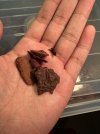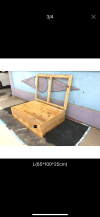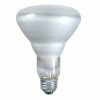paemaker
Member
Hello guys it's me again. I just purchased a new substrate from Exo Terra, The plantation soil. It's made of coconut fiber which is not recommended in Mr.Tom's care sheet (the care sheet suggests coconut coir). It looks quite okay except I don't know if it can completely be replaceable or not. Anyway, I realized my baby sulcata eats some fiber from the substrate and I've seen a post on FB saying it was not harmful if it wasn't in a big amount. I still think my tortoise will continue eating with or without me noticing, so I think of 2 methods: The first method is to filter every single fiber in the soil as much as possible. The other method is I'll use pine bark to place them on top of the soil (soil without being filtered).
I chose the second method and so far, my tortoise has lived in his new environment for almost 2 days now. The humidity is around 70-80% as I have a lid closed. The temp is 32-36 degrees Celsius during the day and during the night, it'll drop to 28-31 degrees, and humidity also drops down to 60%. For lighting, I've had a 100w UVA bulb (intense basking spot), a 25w UVB bulb, and a 100w infrared bulb (for rainy or cold nights), all from Exo Terra.
I attached a picture of the enclosure, so you can see how I set up the enclosure. You'll see I leave a small space for him so maybe he will dig down. It seems to be a small enclosure but I'm planning to buy a bigger one next month. Please let me know what's good and what's not. I hope I'm heading in the right way.
Thank you in advance.
I chose the second method and so far, my tortoise has lived in his new environment for almost 2 days now. The humidity is around 70-80% as I have a lid closed. The temp is 32-36 degrees Celsius during the day and during the night, it'll drop to 28-31 degrees, and humidity also drops down to 60%. For lighting, I've had a 100w UVA bulb (intense basking spot), a 25w UVB bulb, and a 100w infrared bulb (for rainy or cold nights), all from Exo Terra.
I attached a picture of the enclosure, so you can see how I set up the enclosure. You'll see I leave a small space for him so maybe he will dig down. It seems to be a small enclosure but I'm planning to buy a bigger one next month. Please let me know what's good and what's not. I hope I'm heading in the right way.
Thank you in advance.




